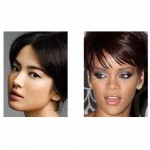
While I always prefer and use rib cartilage for significant nasal augmentation, some patients understandably do not want to have that done. This is particularly true in the patient who walks in for a cosmetic rhinoplasty without any prior nasal surgery. As a result, the use of synthetic implants, particularly composed of silicone, is the most commonly used nasal augmentation material around the world.
Synthetic nasal implants do have, however, a recognized history of problems such as infection, mobility, and even extrusion. This has led to the belief that all synthetic materials should be avoided in the nose. The extremely large experience in Asia with synthetic rhinoplasty, however, would indicate that this is not completely accurate.
Greater success in nasal dorsal augmentation with an implant is to place it, not just under the skin, but under the periosteum on the nasal bones. Elevating this periosteum can be difficult but is important particularly when the implant needs to be placed high on the nasal bones, which is usually needed in men. The significance of subperiosteal placement is that it will help prevent implant mobility and hide the edges of the implant better.
When it comes to nasal implants, what are our options today? The choices come to down material types (silicone vs Medpor primarily) and either a dorsal implant or an extended dorsocolumellar implant style. There are advocates for both material compositions and neither one is necessarily superior over the other. My preference is currently for a silicone-based material because of one factor…its ease of revision. Medpor gets a lot of tissue ingrowth which is biologically favorable. However, should it be necessary to revise it, it is a bear to get out. This translates into a fair amount of tissue disruption to remove it. Since the long-term potential for revisional rhinoplasty surgery is not rare with implants, I lean towards what would be easiest and least destructive to remove.


Some ethnic rhinoplasties need substantial dorsal augmentation as a foundation for its aesthetic success. When rib harvesting is not an option, a properly sized and placed nasal implant can have good long-term results.
Dr. Barry Eppley
Indianapolis, Indiana


